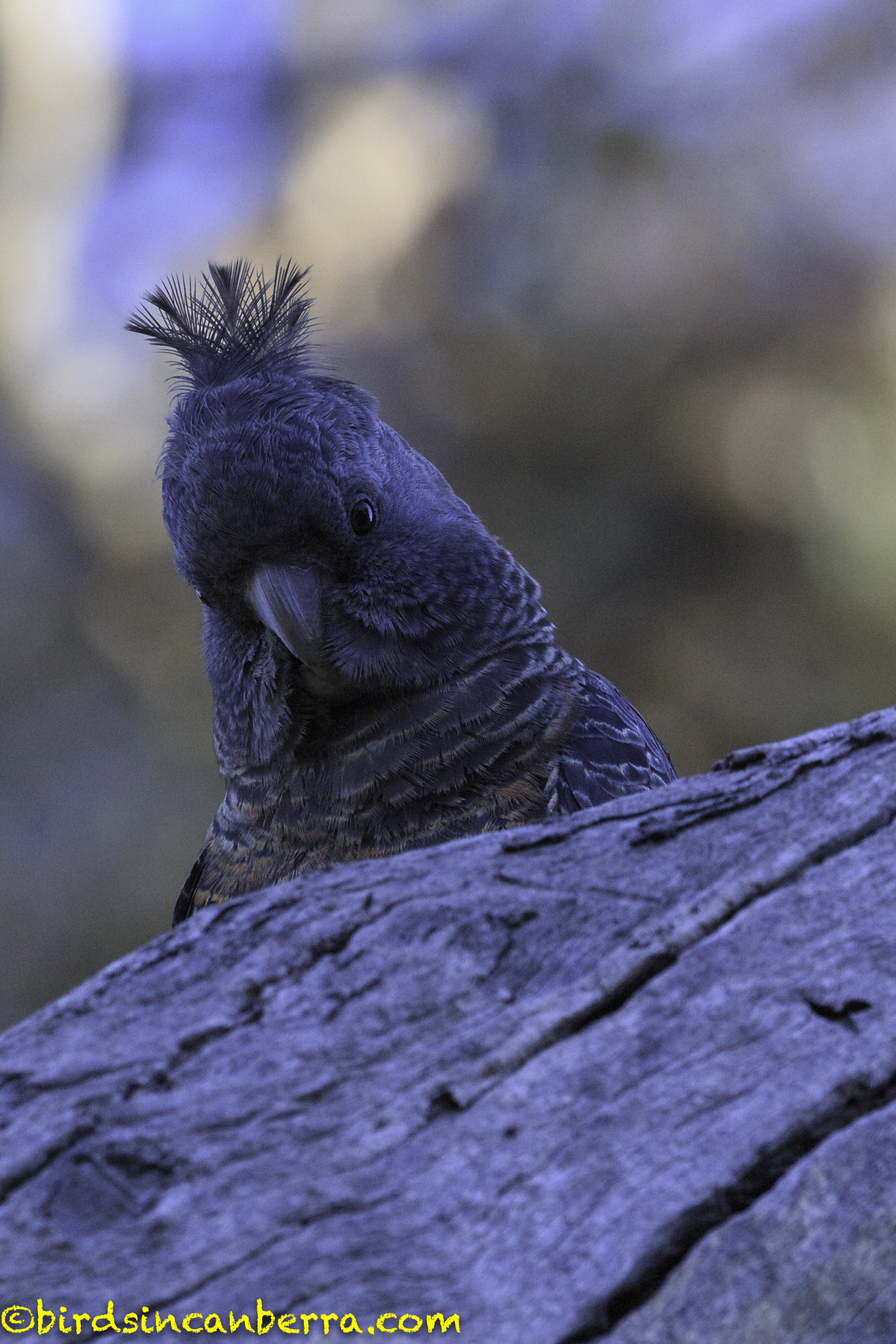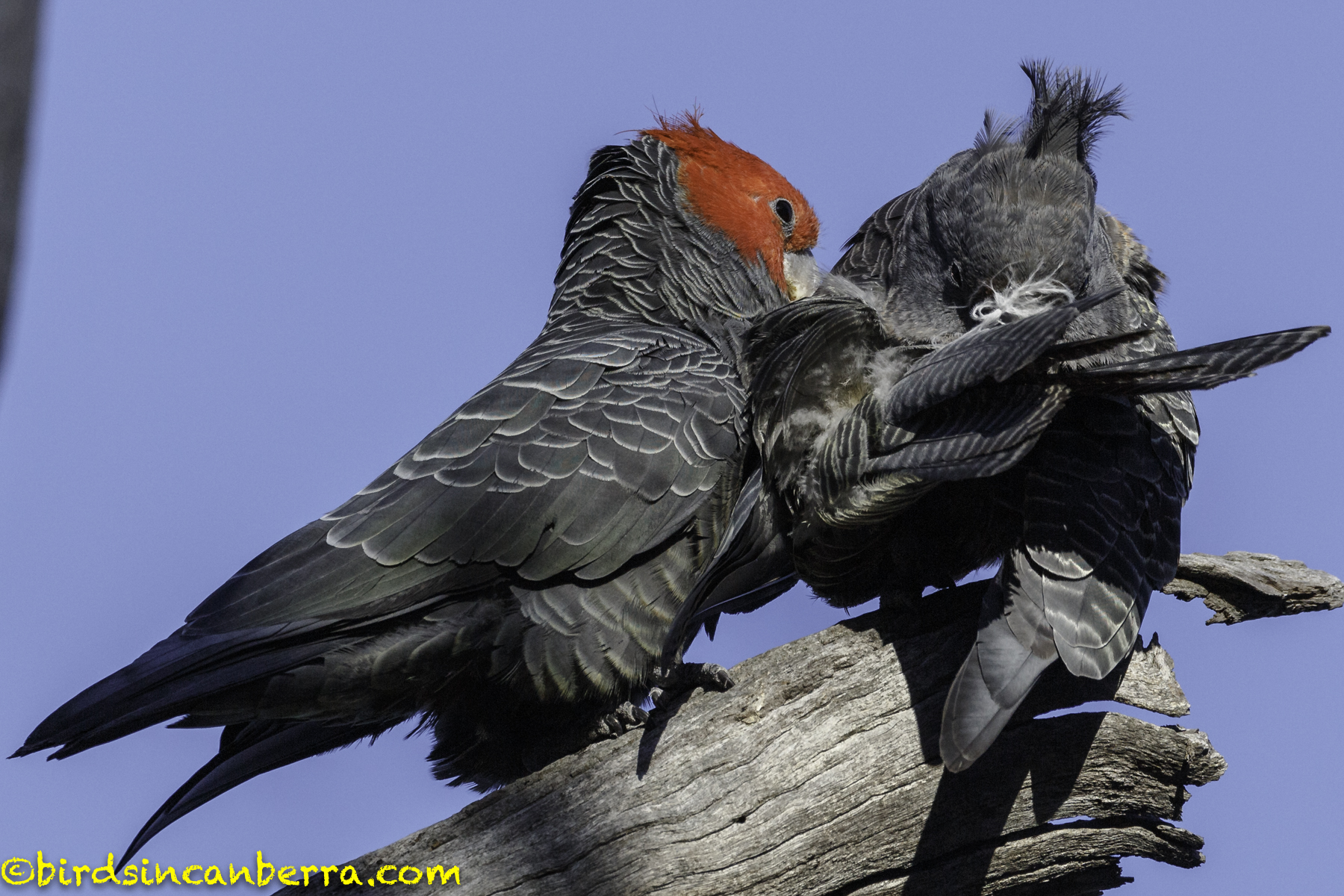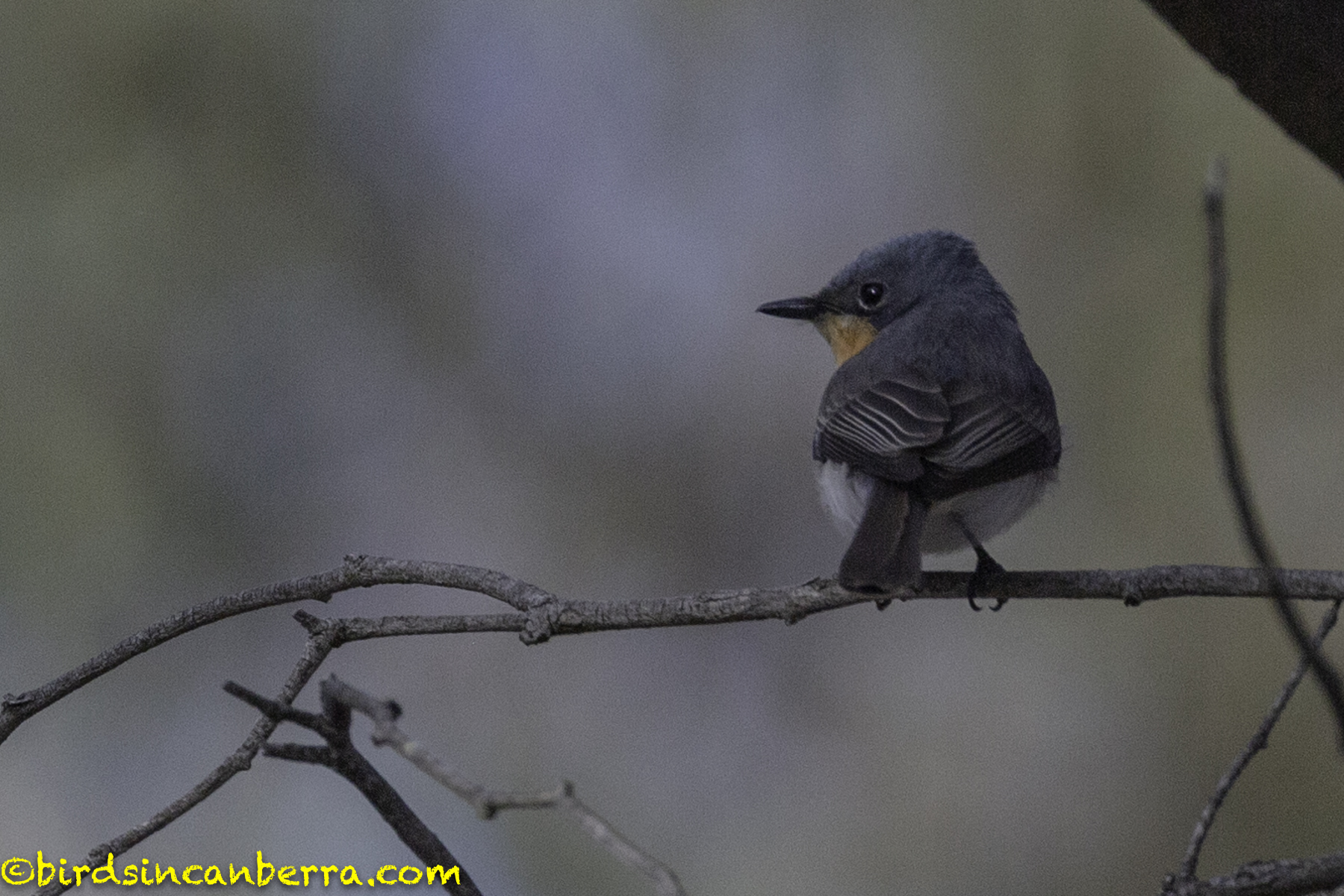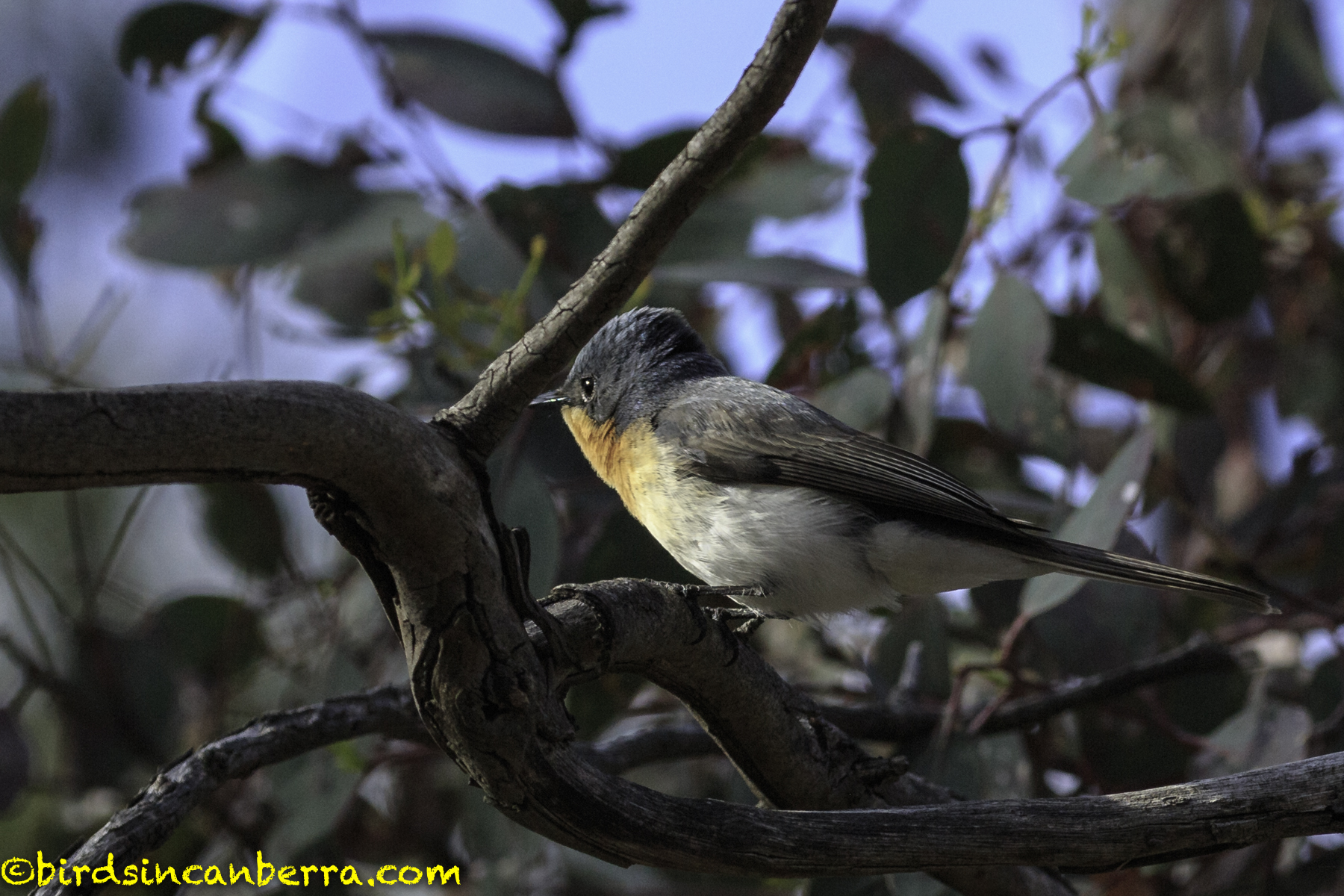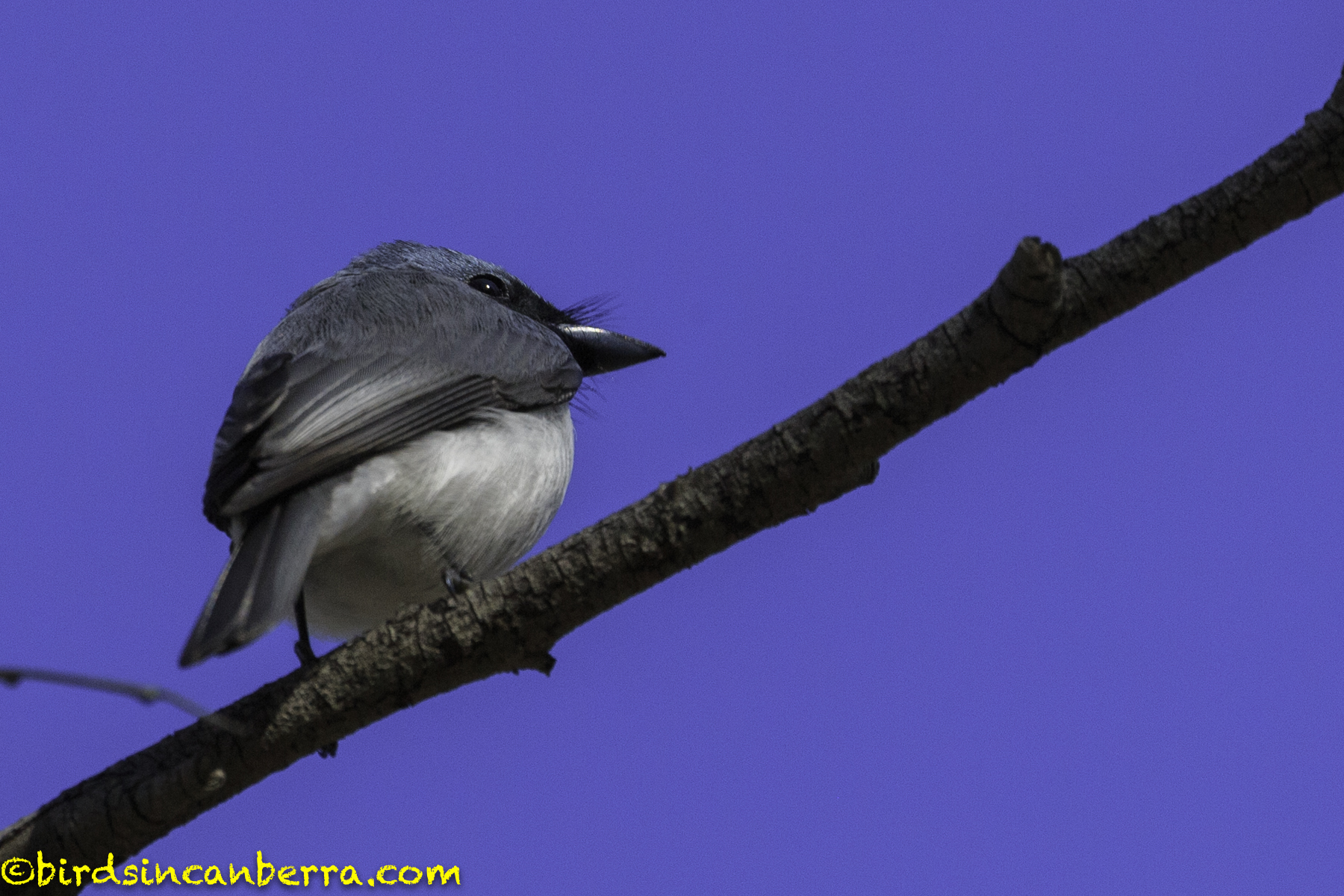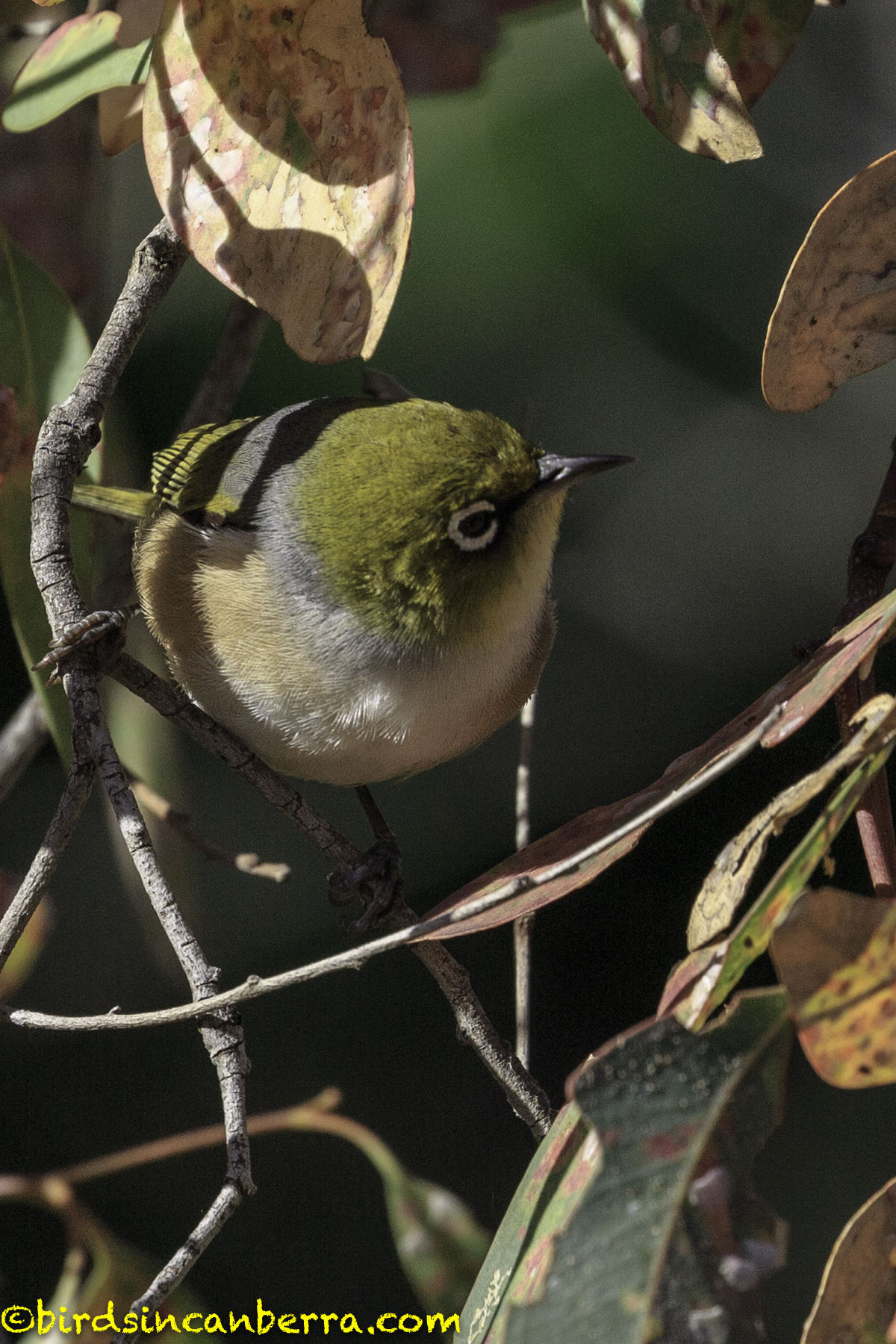This post has taken far too long to publish as it is two weeks since I went for this walk on Red Hill Nature Reserve. Sometimes life just seems to get in the way of our pastimes. The weather on this day was so nice, I was so glad I went out for a walk to take photographs. I met a lady who was walking her dog who gave me some wonderful tips about the birdlife on Red Hill, hence why I was able to photograph the Leaden Flycatchers below. I also had another fantastic encounter with some Gang-gangs. It was a lovely morning on Red Hill. I hope you enjoy the photographs.
On the way to Red Hill, while still in Hughes, I came across this pair of Australian Magpies and the dead baby. I am not sure what killed the bird, although I suspect it may have been some high wind we had experienced the day before. The dead baby looked like it had only been there for a day or two given how little of the body had been taken, The two adults appeared subdued or they may have had another egg in the nest. It was a pity to see this loss of life but that is the way of nature.
Moving onto Red Hill Nature Reserve I heard Gang-gang Cockatoos so I knew I would most likely see them. Almost immediately I saw two of them in two adjacent trees. The female was looking down at me, photo one. The male was in a dead tree to the north of the female, photograph two. He then flew to join tihe female. Without any noise or commotion he climbed on the back of the female to start mating with her. It was harder to see the beak ‘kissing’ but some of my other photos indicated that appeared to be happening, although I was not well-sighted to confirm. You can see in the photographs below where the male appears to be using his claws to hold the female’s wings. He was shifting his body from side to side on the females back, you can see the disturbed feathers on her back. She also appeared to lift her tail up for him. This is the second time I have seen Gang-gangs mating and in both cases the end of the activity seemed to be when the male extended his left wing outwards, photo twelve. In photograph thirteen the male used his beak to help him dismount from the female. The pair then commenced to preen each other. The pair became aware of another couple on an adjacent trunk. Both of them flew to confront the second couple. There was no fighting but the second couple eventually flew off. I was excited to see my second mating, this time from behind.
Walking a bit further up the hill I noticed a bird fly onto a branch, it was a Sacred Kingfisher. The first shot was from a little distance away. I was able to get closer but I was. lying down on my belly to try to get the angle through the branches. I could not avoid all branches unfortunately. The kingfisher stayed on the branch, seemingly observing what was going on around it.
Walking back towards the south, staying on the path to the west of the single water tank, a lady I met told me to keep an eye out for Leaden Flycatchers and sure enough, they were there. I saw a male and a female, I assume they were a pair. They were moving rapidly through the shrubs and small trees. They were not too fearful of me, with the female landing on small trees near to where I was. Because the female came closer I ended up with more pictures of her, the top two rows of my photographs below. The male kept his distance, so I had less photos, hence he is the bottom row. They did not appear together on a branch.
A single male Superb Fairy-wren landed in a tree almost directly above me and I was able to snap off a couple of photographs.
A small band of Silvereyes, around six had a great time eating in a small shrub that seemed to have some scaly disease on its leaves.
Near the Silvereyes there was a creek that had made the mud very wet, where some European Honeybees were extracting water. The blue colouration is probably some liquid pollution leaching out from the ground.


